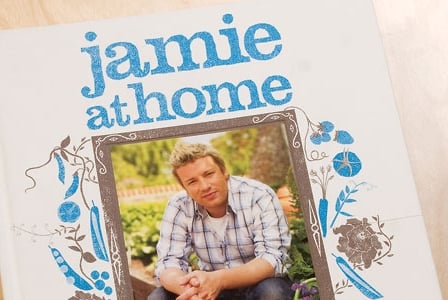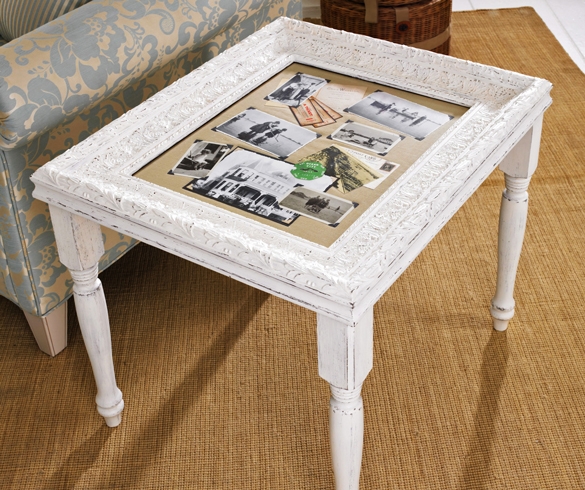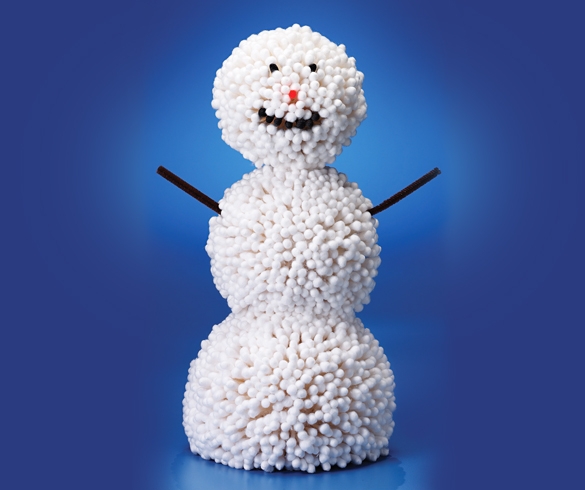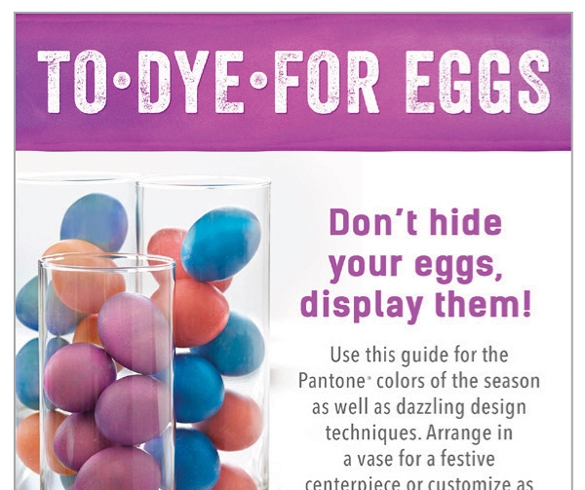
Reading Jamie at Home (Hyperion, 2007) is like sitting across the kitchen table from the chef himself. In the first few pages we get up close and personal when Oliver confesses to a love affair – with his garden.
Reading Jamie at Home (Hyperion, 2007) is like sitting across the kitchen table from the chef himself. In the first few pages we get up close and personal when Oliver confesses to a love affair—with his garden.
Oliver’s enthusiasm flows off the pages with descriptions of his beloved veggies, his passion for growing them, and how to create beautiful and healthy meals for family and friends.
“It just puts a smile on my face to see things happening in the garden and to know that I’ve got loads of lovely food ready to be picked all through the year,” writes Oliver.
Organized by the seasons, Jamie at Home is packed full of gardening wisdom. onions, tomatoes, chilies, peas, beans, plums, and apples are among the many fruits and vegetables lovingly featured in the book. With a boyish enthusiasm, Oliver shares his substantial knowledge of how to plant and care for each one.
Jamie at Home is Oliver’s eighth book, but he hasn’t run out of inspiration, putting his own culinary spin on comfort food classics. Beautifully shot pictures show Oliver in his lush garden and capture earth-covered vegetables in all their sensuous beauty. Simple and colourful illustrations add a rustic charm to the book.
in the “Spring” section, much of the spotlight is devoted to the humble rhubarb plant. included here are three of Oliver’s rhubarb recipes—in his own words—just in time to pull a stalk or two out of your garden this month.
Rhubarb: the Sweet and the Sour
Deep red stalks, curly dark-green leaves, a puckery tart taste—rhubarb is a worthy addition to any backyard veggie patch. once thought to be a laxative, the hearty plant is a perfect perennial for the gardener looking for a low-maintenance plant that produces faithfully year after year. With only a small amount of attention, rhubarb stalks will provide the gardener with a fibre-filled source of vitamin C and calcium.
it’s important to note that while the leaves look luscious, they contain poisonous oxalic acid and should never be eaten.
Because rhubarb is so tart, most of us need to add a substantial helping of sugar. By combining it with other sweeter fruits such as strawberries, peaches, or apricots, it’s possible to reduce the amount of added sugar and, at the same time, to create some interesting flavour pairings.
Rhubarb tastes best when it’s eaten the same day it’s picked, but it can be stored in the fridge for up to two weeks. it also freezes well.
Grow your own
Start your rhubarb plant from root segments called crowns. if you’re lucky, you’ll be able to get a chunk or two from a friend. if not, garden centres usually sell the plants potted up and ready for planting.
Begin by digging a hole in a mostly sunny spot with good drainage. Fill it with compost-rich soil, then plant the crown 1 to 2 inches (2.5 to 5 cm) below the surface. Water regularly and mulch once the crowns push their way through the dirt. resist the temptation to pick any stalks the first year they appear, and collect only a few in the second year.
To harvest, twist and pull the stalks so they break away from the base of the plant. remove flowers before they bloom to encourage the plant to keep producing. Water regularly and apply compost in spring and fall. it’s time to divide the rhubarb when the stalks become thin and spindly. in that case, the plant can be dug up any time between February and march, separated into chunks, and replanted.
Recipes
- My Favourite Hot and Sour Rhubarb and Crispy Pork with Noodles
- Rhubarb and Sticky Ginger Crumble
- Rhubarb Bellini







